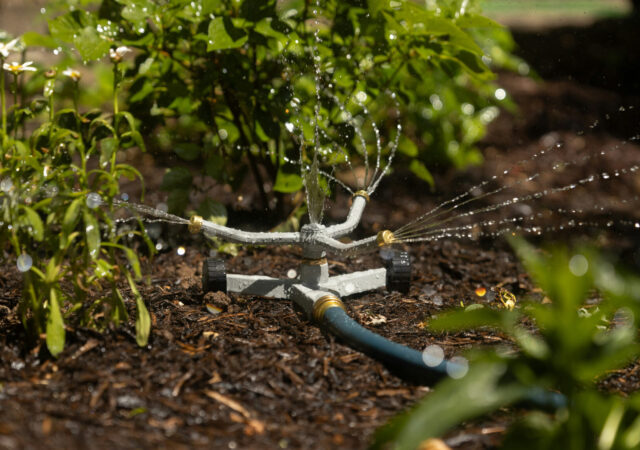Is your lack of green thumb affecting your tomato plants? We are here to tell you that you can have delicious, homegrown tomatoes – even if you’re not a master gardener! With our tips for proper care, planting and growing, you can enjoy a successful crop this summer and for summers to come. Here’s the what, where, when and how to getting the perfect tomatoes.
Where (to plant): Tomatoes need at least 6-8 hours of sunlight to get the best flavor, so plant in an area that provides a lot of light. Use stakes, trellises, or cages to support the plant and help keep it off the ground as the tomatoes grow and start to weigh it down. You should also make sure each tomato plant has enough room to grow – allow about 12-24 inches between each plant.
What (soil to use): Tomato plants need a constant supply of nutrients, and they take up these nutrients best when the soil pH ranges from 6.2 to 6.8. A continuous-release fertilizer that is high in calcium can be used to provide major nutrients, and 3-4 inches of compost will provide minor nutrients that help maintain the moisture and fertilizer for the plant. You can also cover the ground with mulch, such as straw or shredded leaves, to cut down on weeds and keep the soil moist. Two-thirds of the tomato plant stem should be buried when planting it. This will allow it to sprout roots along the buried stem, which will make it stronger and easier for the plant to find water.
How (to care for the plant): Remove the leaves from the bottom foot of the stem after your tomato plant reaches 3 feet tall. These leaves are the oldest and obtain the least amount of sun and air, so they are the most likely to develop fungus problems. You should also pinch the runts and prune the non-fruiting branches so they don’t waste the plant’s energy. Thinning out some leaves to allow sun to ripen the tomatoes is good practice, but don’t overdo it. The leaves are there to photosynthesize and create the sugars that give the fruit flavor.
When (to water): Your tomato plants should be watered regularly, especially while the fruits are developing. They should get at least an inch of moisture per week, through watering or rain, but may need even more than that in the summertime. If the top inch of soil is dry or your plant is looking dry and wilted, it’s time for more water. Watering your plant irregularly can lead to cracking and blossom end rot (that nasty black spot on the bottom of the tomato). After the tomatoes start to ripen, you can cut back on watering.




